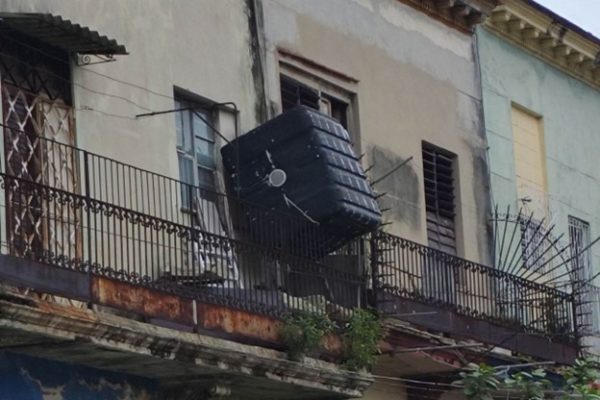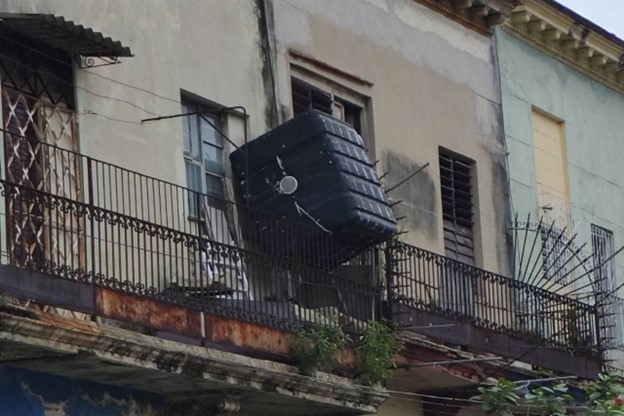
Desperation led Dayron to acquire a tank that had been used to store ink.
By Natalia Lopez Moya (14ymedio)
HAVANA TIMES – He vigorously scrubs the inside of the tank and an orange liquid with a strong chemical smell comes out. “It was cheaper because it’s recycled,” Dayron boasts as he shows off a blue plastic tank that he is reconditioning to increase the water reserves in his home, which has been hit by the instability in the water supply now affecting Havana. “Before, it was used to store ink, I think it was the kind used to print newspapers,” he tells 14ymedio.
The rooftops, balconies, terraces and walkways of the city have been filling up with these tanks that have always been part of the urban landscape on the Island but which, in recent years, have multiplied due to the constant breakages of the pipes and pumping equipment. “I look out the window and see tanks everywhere, people are putting them even on the narrowest balconies because they know that this problem will last a while, there is no short or medium term solution,” explains Dayron, a resident of J Street between 19 and 21 in El Vedado.
“My neighbor used to have a terrace full of ferns, which were really pretty. Now he got rid of the plants and installed two 750-liter tanks,” explains the man who joined a Facebook page called “Victims of Havana’s water.” On this virtual community, dozens of messages are posted every day, most of them desperate cries in the face of dry pipes and the lack of response from the state company. “We are in the desert,” says one Internet user, and another responds that the official monopoly is “a terrorist group” that is playing with the patience of the Cuban people.
Between one message and another, advertisements for the sale of tanks are slipped in. There are tanks with a capacity of more than 1,500 litres, reinforced by a metal frame, black, blue, white, with wide lids and all their fittings, or, available more economically, are those that are recycled and that previously contained vegetable oil, fuel or printing ink. The latter are cheaper but also entail health risks because removing all their waste is a complex and sometimes impossible task.
“What am I going to do?” Dayron asks. “The ones that are originally for water cost me between 30,000 and 35,000 pesos, the ones that hold 750 liters. If it’s one that holds 1,000 liters, that’s almost 50,000 pesos,” laments the Havana native. For exactly half that price, he got a tank previously used in the printing industry, but now he has the hard task of cleaning its interior and getting it “ready as quickly as possible.”
The urgency could speed up the cleaning process and turn the tank into the new reservoir for the water that Dayron’s family will use to bathe, clean the house, cook and even drink. “Either we die from this or from thirst,” the man says with resignation.
In the Facebook group, which already has more than 2,500 members, someone has posted a couple of ads with “good tanks, those for industrial use, but clean. Guaranteed safety,” it stresses. No one knows what they contained, but everyone is sure what they will be used to contain that resource that is so scarce in pipes and faucets.
Translated by Translating Cuba.
Read more from Cuba here on Havana Times.




